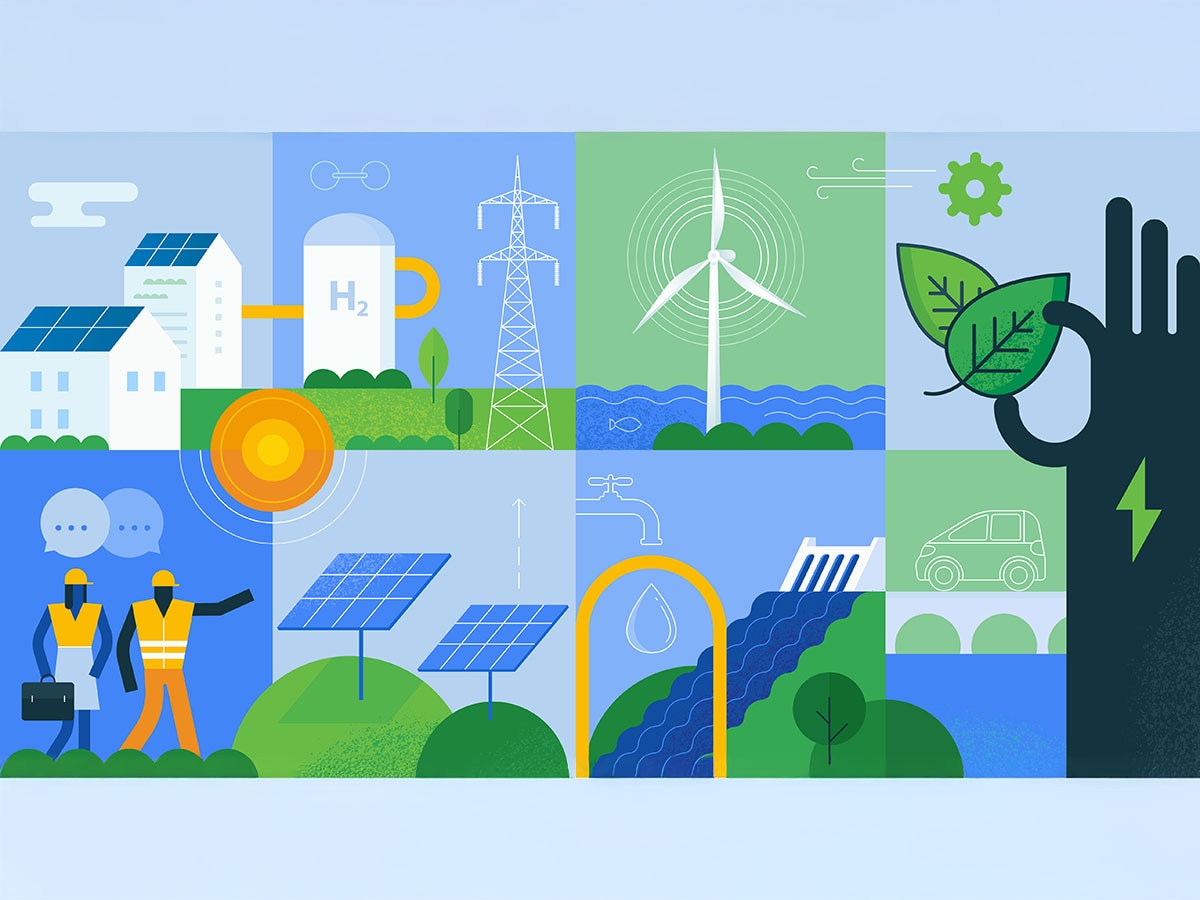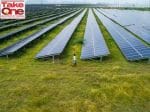India needs multi-decadal planning to achieve net-zero by 2070, says CEEW study
The Council on Energy, Environment and Water presents a first-of-its-kind roadmap to India's renewable energy and green hydrogen potential, and the challenges ahead
 India’s current RE potential stands at around 150 GW. The country has the target to have 500 GW of non-fossil-fuel capacity by 2030, and reach net-zero by 2070.
Image: Getty Images
India’s current RE potential stands at around 150 GW. The country has the target to have 500 GW of non-fossil-fuel capacity by 2030, and reach net-zero by 2070.
Image: Getty Images
India has a potential of generating 24,000 GW of renewable energy (RE) without any constraints, says a new study by the Council on Energy, Environment and Water (CEEW). The country needs less than one-third of non-fossil-fuel potential—up to 7,000 GW—to reach its net-zero targets by 2070, which includes solar capacity of over 5,600 GW and wind capacity of around 1,800 GW. However, deployment beyond 1,500 GW could face multiple constraints and will require strategic land use, improved water management and a resilient grid, adds the study.
He explains that one of the intents of the study was to determine how much each of the constraints around land scarcity, water availability and management, population density and climate risks will limit India’s ability to deploy RE, and how these barriers can be addressed. For instance, while most of the land in the country has been digitised, there are features of the land parcel, like ownership rights and usage, which are not understood and documented. These could give rise to conflicts and delays that can affect RE deployment.
States with high unconstrained RE potential include Rajasthan (6,464 GW), Madhya Pradesh (2,978 GW), Maharashtra (2,409 GW) and Ladakh (625 GW), which have low-cost solar potential, while Karnataka (293 GW), Gujarat (212 GW) and Maharashtra (184 GW) offer considerable wind potential.
The study also says that India can produce up to 40 million tonnes per annum of green hydrogen at a cost lower than $3-5 per kg. This cost can decrease further in the coming years due to decline in the cost of electrolysers (devices that use electricity to split water into hydrogen and oxygen) and renewable energy through the introduction of more efficient technologies.
However, high land prices and limited availability of uncommitted water (not already allocated to agriculture, industry, domestic or other sectors) will be a challenge for expansion of green hydrogen projects beyond the current capacity of 5 million tonnes per annum. The high cost of power generation adds to the roadblocks. “Although India has a large RE potential, the cost of power generation will significantly influence how much of it is eventually exploited. RE and green hydrogen have to compete with fossil fuels for widespread acceptance and minimal impact on economic growth,” says the report.
Also read: What Budget 2024-25 says about India's energy security and transition roadmap
Only 35 percent of onshore wind potential and 41 percent of solar potential are located in areas free from historical land conflicts. Around 41 percent of wind potential (732 GW) is in areas with a high population density of over 400 people per sq km, “posing a potential risk of mobilisaiton against the development of wind power projects”, the study says. Only 29 percent of onshore wind potential and 27 percent of solar potential located in areas with density of population lower than 250 people per sq km.
A whole bunch of stakeholders, including social communities, landowners, government, businesses, investors and legal experts, are involved in the deployment of clean energy projects. There needs to be a framework in place to address the needs, demands and challenges each stakeholder faces, Mallya says, which will enable them to address issues in a comprehensive way in the initial phases of project conceptualisation itself.
Industry can play a crucial role in helping other stakeholders come up with this framework, says Mallya. “They can also help states and the Centre understand and look at the future in a multi-decadal sense: If we have to contribute to non-fossil-fuel development beyond 500 GW, what are the things that need to happen, what are the barriers we foresee, how to model it and overcome challenges,” he says. According to him, businesses can also help governments better understand land and water management, perhaps as part of their corporate social responsibility (CSR) actions.


















